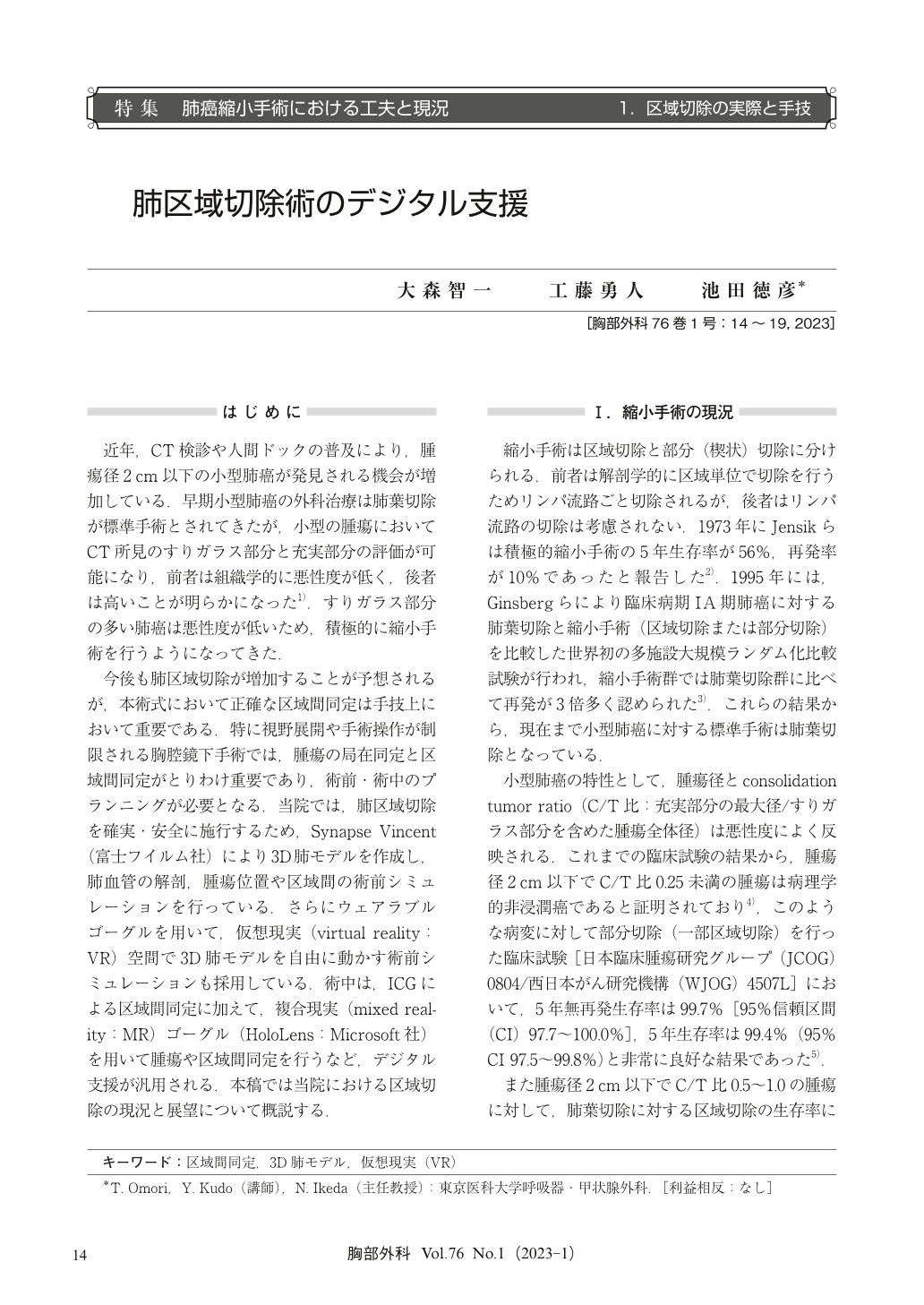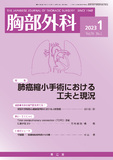Japanese
English
- 有料閲覧
- Abstract 文献概要
- 1ページ目 Look Inside
- 参考文献 Reference
近年,CT検診や人間ドックの普及により,腫痬径2 cm以下の小型肺癌が発見される機会が増加している.早期小型肺癌の外科治療は肺葉切除が標準手術とされてきたが,小型の腫瘍においてCT所見のすりガラス部分と充実部分の評価が可能になり,前者は組織学的に悪性度が低く,後者は高いことが明らかになった1).すりガラス部分の多い肺癌は悪性度が低いため,積極的に縮小手術を行うようになってきた.
In recent years, the number of cases of small-size lung cancer (<2 cm) has increased with the widespread of computed tomography (CT) in medical checkup and comprehensive medical checkup. Although lobectomy has been the standard surgical treatment for early-stage small-size lung cancer, it has become possible to evaluate the CT findings of small tumors in terms of ground-glass areas and solid areas, and it has become clear that the former has a low histological malignancy while the latter has a high malignancy. Lung cancers with high ground-glass opacity have low malignant potential and are therefore being aggressively treated by limited resection. The number of lung segmentectomies is expected to increase in the future, and accurate identification of pulmonary intersegmental planes is important in this operation. Especially in thoracoscopic surgery, where the field of view and surgical operation are limited, tumor localization and intersegmental planes identification are particularly important and require preoperative and intraoperative planning. In order to perform safe and reliable lung segmentectomy, we create a three-dimensional (3D) lung model by Synapse Vincent for preoperative simulation of pulmonary vascular, tumor location, and intersegmental plane. In addition, preoperative simulations are performed using wearable goggles to freely move the 3D lung model in a virtual reality (VR) space. Intraoperatively, in addition to indocyanine green (ICG)-based intersegmental identification, digital assistance is used for tumor and intersegmental identification using mixed reality (MR) goggles. We describe the current status and future prospects of segmentectomy in our institution.

© Nankodo Co., Ltd., 2023


